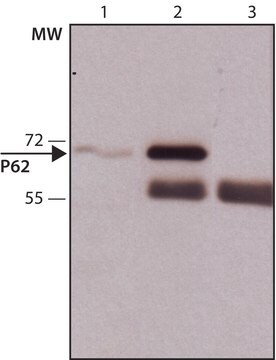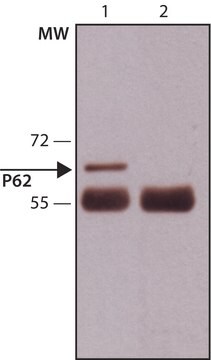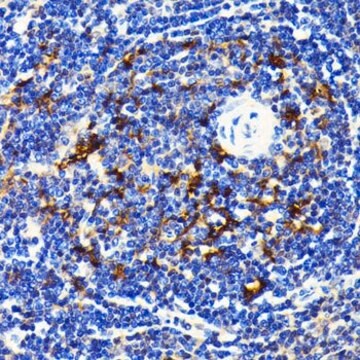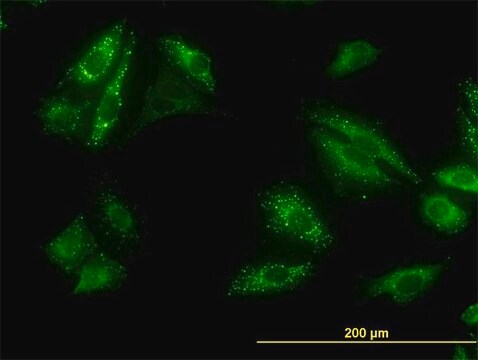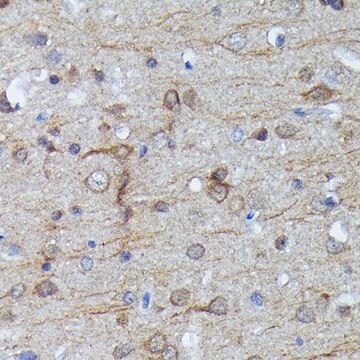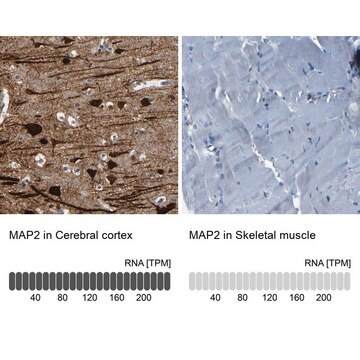一般說明
We are committed to bringing you greener alternative products, which adhere to one or more of The 12 Principles of Green Chemistry.This antibody is Preservative-free, produced without the harm or sacrifice of animals and exceptionally stable to allow for ambient shipping and storage if needed and thus aligns with "Waste Prevention", "Designing Safer Chemicals" and "Design for Energy Efficiency".
Click here for more information.
ZooMAb® antibodies represent an entirely new generation of recombinant monoclonal antibodies.
Each ZooMAb® antibody is manufactured using our proprietary recombinant expression system, purified to homogeneity, and precisely dispensed to produce robust and highly reproducible lot-to-lot consistency. Only top-performing clones are released for use by researchers. Each antibody is validated for high specificity and affinity across multiple applications, including its most commonly used application. ZooMAb® antibodies are reliably available and ready to ship when you need them.
特異性
Clone 2D14 is a ZooMAb® Rabbit recombinant monoclonal antibody that specifically detects Sequestosome-1 (p62). It targets an epitope within 14 amino acids from the internal region.
免疫原
KLH-conjugated linear peptide corresponding to 14 amino acids from the internal region of human Sequestosome-1 (p62).
應用
Quality Control Testing
Evaluated by Western Blotting in Mouse Brain tissue lysate.
Western Blotting Analysis: A 1:1,000 dilution of this antibody detected p62/SQSTM1 in Mouse Brain tissue lysate.
Tested applications
Western Blotting Analysis: A 1:1,000 dilution from a representative lot detected p62/SQSTM1 in Human Brain tissue lysate.
Affinity Binding Assay: A representative lot of this antibody bound p62/SQSTM1 with a KD of 1.0 x 10-12 in an affinity binding assay.
Immunocytochemistry Analysis: A 1:100 dilution from a representative lot detected p62/SQSTM1 in U251cells treated with chloroquine.
Note: Actual optimal working dilutions must be determined by end user as specimens, and experimental conditions may vary with the end user
標靶描述
Sequestosome-1 (UniProt: Q13501; also known as EBI3-associated protein of 60 kDa, EBIAP, p60, Phosphotyrosine-independent ligand for the Lck SH2 domain of 62 kDa, Ubiquitin-binding protein p62) is encoded by the SQSMT1 (also known as ORCA, OSIL) gene (Gene ID: 8878) in human. p62/SQSTM1 is a multi-domain signaling scaffold protein that is ubiquitously expressed and is involved in numerous critical cellular functions such as autophagy, apoptosis and inflammation. It serves as an autophagy receptor that participates in selective macroautophagy and acts as a bridge between polyubiquitinated cargo and autophagosomes. It acts as a cargo receptor by detecting ubiquitinated substrates using its UBA domain, aggregating them through PB1-mediated homo-polymerization and attaching them to the autophagosome by association with LC3. It is commonly found in inclusion bodies containing polyubiquitinated protein aggregates. In neurodegenerative diseases, it is detected in Lewy bodies in Parkinson disease, neurofibrillary tangles in Alzheimer disease, and HTT aggregates in Huntington disease. p62 can undergo phosphorylation at multiple sites by various protein kinases. Phosphorylation at serine 24 in the PB1 domain by PKA is shown to regulate p62 polymerization and interaction partner binding profile. Phosphorylation at Ser-403 by ULK1 is stimulated by SESN2 (PubMed:25040165). It can undergo phosphorylation at Ser 403 by TANK Binding Kinase 1 (TBK1), which promotes relocalization of ′Lys-63′-linked ubiquitinated STING1 to autophagosomes. Mutations in SQSTM1 gene have been linked to Paget disease of bone that is characterized by increased bone turnover affecting one or more sites throughout the skeleton and makes them more susceptible to fractures. This ZooMAb® recombinant monoclonal antibody, generated by our propriety technology, offers significantly enhanced specificity, affinity, reproducibility, and stability over conventional monoclonals. (Ref.: Christian, F., et al. (2014). Biochim. Biophys Acta. 1843(11); 2765-2774; Ro, SH., et al. (2014). FEBS J. 281(17); 3816-3827; Clausen, TH., et al. (2010). Autophagy. 6(3); 330-344).
外觀
Purified recombinant rabbit monoclonal antibody IgG, lyophilized in PBS with 5% Trehalose, normal appearance a coarse or translucent resin. The PBS/trehalose components in the ZooMAb formulation can have the appearance of a semi-solid (bead like gel) after lyophilization. This is a normal phenomenon. Please follow the recommended reconstitution procedure in the data sheet to dissolve the semi-solid, bead-like, gel-appearing material. The resulting antibody solution is completely stable and functional as proven by full functional testing. Contains no biocide or preservatives, such as azide, or any animal by-products. Larger pack sizes provided as multiples of 25 μL.
儲存和穩定性
Recommend storage of lyophilized product at 2-8°C; Before reconstitution, micro-centrifuge vials briefly to spin down material to bottom of the vial; Reconstitute each vial by adding 25 μL of filtered lab grade water or PBS; Reconstituted antibodies can be stored at 2-8°C, or -20°C for long term storage. Avoid repeated freeze-thaws.
法律資訊
ZooMAb is a registered trademark of Merck KGaA, Darmstadt, Germany
免責聲明
Unless otherwise stated in our catalog or other company documentation accompanying the product(s), our products are intended for research use only and are not to be used for any other purpose, which includes but is not limited to, unauthorized commercial uses, in vitro diagnostic uses, ex vivo or in vivo therapeutic uses or any type of consumption or application to humans or animals.

